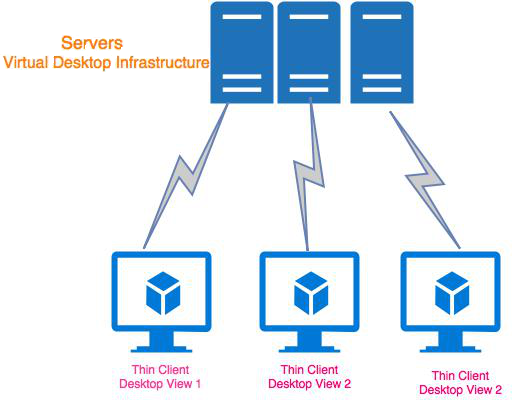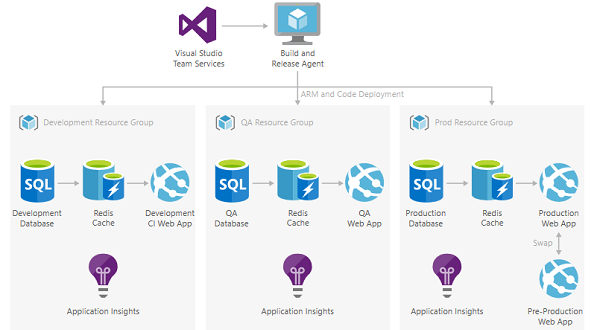
- Virtualization 2.0 Tutorial
- Virtualization 2.0 - Home
- Virtualization 2.0 - Overview
- Virtualization 2.0 - Pros and Cons
- Virtualization 2.0 - Common Uses
- Virtualization 2.0 - Hardware
- Virtualization 2.0 - Microsoft HyperV
- VMware Workstation Player
- Virtualization 2.0 - VirtualBox
- Virtualization 2.0 - Openstack
- Preparing the Infrastructure
- Virtualization 2.0 - Troubleshooting
- Backing Up, Restoring & Migrating VM
- Virtualization 2.0 Useful Resources
- Virtualization 2.0 - Quick Guide
- Virtualization 2.0 - Useful Resources
- Virtualization 2.0 - Discussion
Virtualization 2.0 - Common Uses
There are several types of uses in virtualization, but the most commonly used are Server Virtualization and Client Desktops Virtualization. We have already discussed their advantages in the previous chapter and why are they used widely.
Virtualizing Desktop Computers
Client virtualization also called as VDI runs the entire desktop environment within a centralized server. All processing is done within the server. Client devices are typically thin clients that serve as an end node to connect I/O peripherals such as keyboard, mouse, a display, audio connectors and even USB ports over the LAN.

As discussed earlier, a thin client hardware is a computer terminal, which provides I/O for a keyboard, mouse, monitor, jacks for sound peripherals, and open ports for USB devices.
For example – Printer, Flash Drive, Web Cam, Card Reader, Smartphone, etc. Some thin clients include legacy serial and/or parallel ports to support older devices such as Receipt Printers, Scales, Time Clocks, etc. Thin client software typically consists of a GUI (graphical user interface), Cloud Access Agents (for e.g. RDP, ICA, PCoIP), a local web browser, terminal emulations (in some cases) and a basic set of local utilities.
The largest producers of thin clients are HP, Dell and IBM.

Running a Specific Program Solution
One of the best software known for Desktop Virtualization is XenApp & XenDesktop. Deliver Windows, Linux, Web and SaaS applications or full virtual desktops to workers on any device and anywhere.
More information can be found on https://www.citrix.com/products/xenapp-xendesktop/
Another major provider is VMware with its platform called VMware Horizon 7. To purchase and understand all their features and specifications, click on the following link https://www.vmware.com/products/horizon.html
Microsoft is another provider with a combination of Remote desktop services along with Hyper-V. For any further Information on this, click on the following link https://technet.microsoft.com/en-us/windowsserver/ee236407.aspx
Setting up Test and Development Environments
One of the most powerful features of a virtualized environment is the possibility to create labs for different approaches in a minute, especially in software development and then to import the same infrastructure in production.

Regarding the test environment, it brings cross-platform functionality to your dev-test environment and uses your preferred coding language to build natively. It tests your applications on the devices and platforms you use today: from Linux, Windows to iOS and Android.
All the features mentioned in the above can be done through private cloud or public cloud. It depends on what we would like to use as per the requirement. You should take into consideration the human resources with which you have to manage this cloud and the budget that you want to spend.